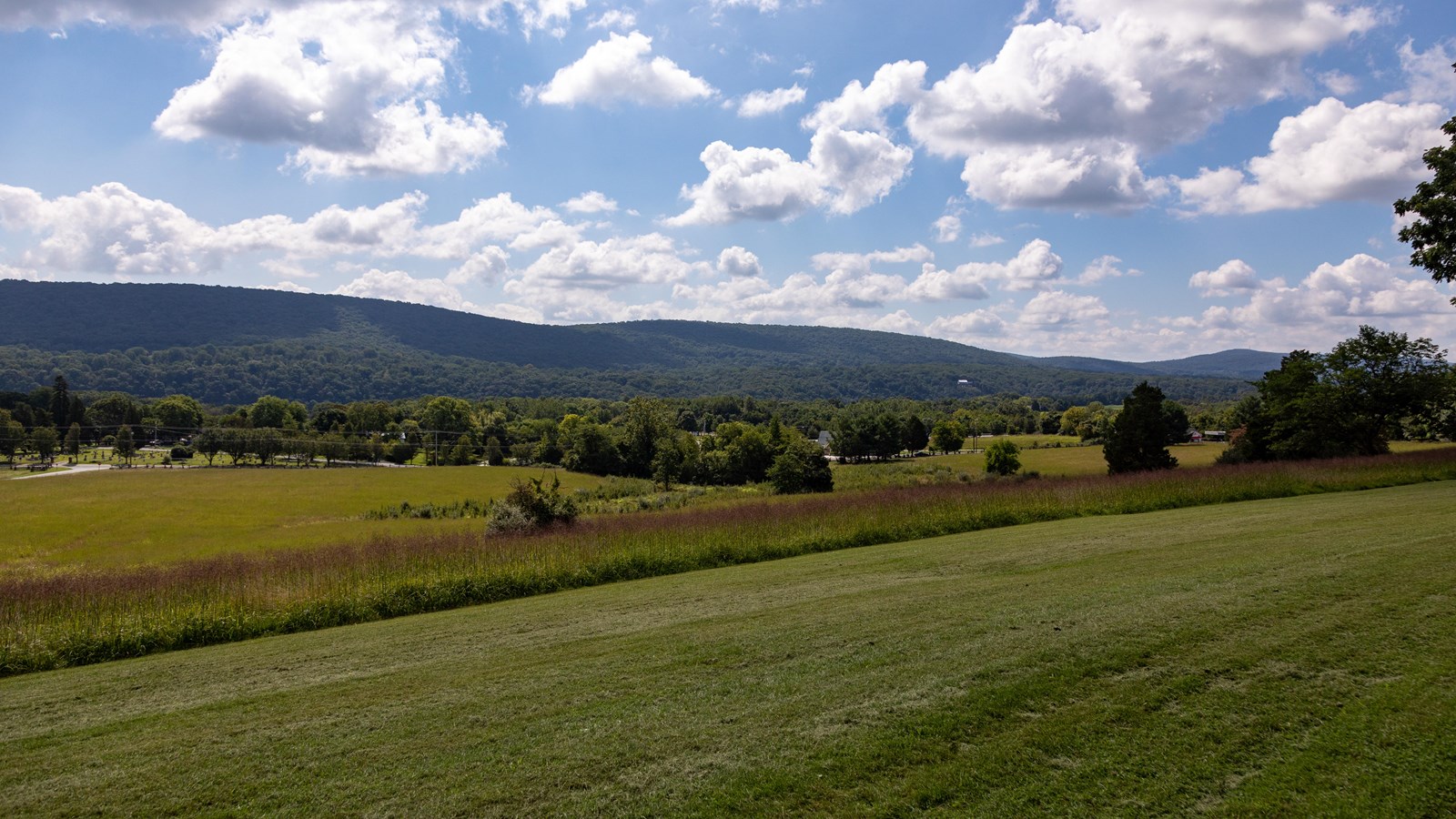Last updated: April 5, 2024
Place
Bolivar Heights

NPS / Claire Hassler
Historical/Interpretive Information/Exhibits, Parking - Auto, Trailhead
Bolivar Heights is one of the most important Civil War battlefields in West Virginia -- it was the site of the largest surrender of United States troops during the Civil War. Today, from this location, you can walk beside trenches, take a hike in the woods, or enjoy an incredible vista where you can see most of the park areas from one vantage point. You can drive to this location on your own.
Bolivar Heights witnessed more battle action than any other location at Harpers Ferry. The first battle of the Civil War at Harpers Ferry occurred at Bolivar Heights on October 16, 1861, exactly two years after the commencement of the John Brown Raid. Alarmed by Union forces in the new Confederacy, especially along the Potomac River, a Confederate force under Col. Turner Ashby struck Union Col. John Geary's men at Bolivar Heights. Many Confederates were angry over the Union seizure of a local flour mill, which provoke some of the fighting but soon after the Confederate attack, Geary held the location and forced a Confederate retreat.
Confederate Commander Stonewall Jackson's arrival produced the second battle at Bolivar Heights on May 30, 1862 during Jackson's famous Valley Campaign. Jackson had routed all Union soldiers in the Shenandoah Valley, except those at Harpers Ferry. Alarmed at Jackson's successes, Washington reinforced the Union forces at Harpers Ferry by sending Brig. Gen. Rufus B. Saxton to Bolivar Heights to defend the Union position. Jackson attacked Bolivar Heights during a ferocious thunderstorm, but Saxton's position on Camp Hill was held and Jackson retired under the cover of darkness. Siege cannon from the Naval Battery on Maryland Heights plummeted Jackson's men as they advanced across the heights through the town of Bolivar, damaging numerous homes.
The third time Bolivar Heights witnessed action also involved Stonewall Jackson's men. During the Battle of Harpers Ferry, September 12-15, 1862, Jackson forced a final stand atop Bolivar Heights with the Union forces. Jackson's artillery pummeled the heights from three directions, Maryland Heights, Loudoun Heights, and School House Ridge. On the night of the 14th, he sent Commander A.P. Hill around the southern flank of the heights, which forced the Union garrison to surrender. The formal surrender of nearly 12,700 Union soldiers, the largest capitulation of Union forces during the Civil War, occurred on Bolivar Heights.
The fourth time Bolivar Heights experienced combat occurred during Confederate General Robert E. Lee's advance toward Gettysburg. Lee sent a column of men to maneuver the Union out of Harpers Ferry, but the Union forcers offered minimal resistance and the Union retreated behind the big guns on Maryland Heights. Bolivar Heights would be blasted from Maryland Heights during the last week of June 1863 and the indiscriminate shelling created havoc in the community, which wrecked civilian homes.
The fifth and final time Bolivar Heights was a battlefield occurred during Confederate Commander Jubal Early's invasion of the North during the end of June into the first week of July 1864. Early's main column contended with Maryland Heights, north of the Potomac, and sent a detachment of forces to seize Bolivar Heights along with Harpers Ferry from the west. The Union repeated their tactic of the previous year, offering limited resistance on Bolivar Heights, and instead turned toward the siege cannon on Maryland Heights to pulverize the Confederate invaders. Once again, Bolivar Heights and the town suffered extensive damage from bombardment.
When Bolivar Heights was not a battlefield, it was a campground. Bolivar Heights' gentle, sweeping slopes first were used by Jackson during the spring of 1861. Here Jackson encamped and drilled the 1st Virginia Brigade, which became the famous "Stonewall" Brigade. Jackson gained his familiarity with the topography and terrain of Bolivar Heights during this formative period, which enabled him to use this knowledge to his advantage during the Battle of Harpers Ferry in 1862.
The largest encampment on Bolivar Heights occurred following the Battle of Antietam. The entire 2nd Corps of the Army of the Potomac, numbering nearly 15,000 men, lived on Bolivar Heights for nearly six weeks before departing for the Fredericksburg Campaign during the first week of November 1862. During this time, Professor Thaddeus Lowe raised his gas-filled balloon to observe Confederate movements in the Shenandoah Valley. In addition, the Union troops built extensive earthworks along the length of the ridge, trying to make Bolivar Heights more defensible. Bolivar Heights has a lower elevation than Maryland and Loudoun Heights, which makes it easier to approach through the Shenandoah Valley.
Bolivar Heights also was the site of the largest corral and wagon yard in the Shenandoah Valley during the Civil War. During Union Maj. Gen. Philip H. Sheridan's Shenandoah Valley Campaign of 1864, Sheridan converted Bolivar Heights into a temporary corral for thousands of mules and hundreds of quartermaster wagons, waiting to transport supplies and munitions south. Bolivar Heights also became a temporary graveyard. Hundreds of Union soldiers died at Harpers Ferry from disease and most were buried on Bolivar Heights. These remains were removed after the war and reinterred at the Antietam National Cemetery.
